Over the years, tactics have undergone a seismic shift. In the last decade alone, focus has shifted from one tactical shape to various tactical shapes that can be assumed in game. The focus is on transitions and we have seen a number of changes in the way managers approach the game.This has resulted in a delightful number of approaches and tactics with various degrees of success. The game has become more about strategy as a result. It is no longer a game that can be won by the most technically gifted individuals. The skills need to be used in an organized manner to get the best results. Here is a list of 5 teams that proved to be most efficient in the last decade and those which have taken well to modern football tactics.
#1 Carlo Ancelotti\'s AC Milan
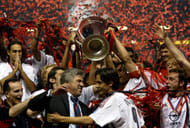
Carlo Ancelotti has acquired a reputation for being able to accommodate every kind of player in his setup. Players that may be considered incongruent or even uncomplimentary have been mixed together by Ancelotti to wonderful effect. This zest for transforming players and mixing and matching a multitude of styles and individuals first began with his managerial stint at AC Milan – a club where he made his name as a player as well.
Ancelotti was gifted a very talented squad with legendary names such as Filippo Inzaghi, Andriy Shevchenko, Paolo Maldini, Alessandro Costacurta, Rui Costa and later Kaka, Andrea Pirlo and Clarence Seedorf. The problem was in accommodating all the best attacking players in one formation. Pirlo, Kaka, Seedorf, Costa were all good central midfielders. The team had no natural width to speak of.
Ancelotti countered this problem by playing a very narrow formation with no wingers. The width was provided by the full backs. This led to the inevitable problem of teams pushing up to exploit the space left behind by the fullbacks, but this was countered by the two strikers and the playmaker just behind them.
The trio (usually Inzaghi, Shevchenko and Rui Costa later Shevchenko, Inzaghi and Kaka) pressed high up the field and their menacing movements forced the opposition to sit deep. This also allowed for Pirlo to thrive in his new position as the deep-lying creative midfielder. The energy and box-to-box running was provided by the two wide midfielders often played by Seedorf and Gattuso.
Ancelotti could only manage to win one Scudetto in his time as manager, but led his team to an incredible three champions league finals in his 8 years at the club, winning two of them. Ancelotti later enjoyed great success winning the Premier League and FA Cup with Chelsea and winning the Copa Del Ray and Champions League with Real Madrid.
#2 Tony Pulis\' Stoke City
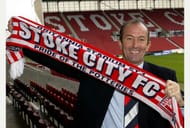
Stoke returned to the top tier of English football in 2008 under the stewardship of Tony Pulis, and though he might be criticized for his ancient methods and reactive brand of football, the work he has done there has ensured that Stoke have never had to face a relegation battle since their promotion to the Premier League.
Pulis might be lambasted for his style and his refusal to romanticize football in the manner that other managers do, but he is easily one of the most effective managers in the modern game. He utilized the throw in and corner kicks to good effect and he isn't afraid of physically hurting the other team if it means he can get a result. He is a dour and contemptible man, but one that gets the job done.
Pulis likes to employ a relatively simple 4-4-1-1. The two banks of four are tightly arranged and move in unit cohesion to prevent spaces from opening up. The shadow striker is expected to scour his own half pressing deep playmakers while the striker stays alert for the counter-attack. The objective was to keep a clean sheet, which his teams more often than not did. It did though, raise some concerns from the fans for his approach. Pacey wingers were the only outlet for goals from open play.
His one-dimensional approach eventually cost him his job, but it did not make his work any less admirable. He returned to management with Crystal Palace saving them from inevitable relegation and is now working with West Brom trying to achieve the same. His methods have seen a slight change, but the philosophy remains the same - defend, defend, defend.
#3 Diego Simeone\'s Atletico
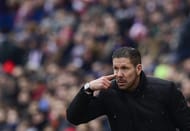
The reign of the tiki-taka was not thwarted by conventional foes like Real Madrid, but by an unlikely opponent in Atletico Madrid. The even more stunning aspect of this takedown was the simplicity with which it was done. A simple 4-4-2 which used selective pressing to choke opponents was the weapon of choice for Diego Simeone with which he plotted the downfall of some of the biggest clubs in the world.
In a country obsessed with playing possession football, Simeone chose to concentrate on breaking the play and utilizing measured counter attacks to dominate. His teams are set up in the basic 4-4-2 formation. The two strikers at the top are expected to press the centre backs and force the ball wide. The team doesn't employ a gung-ho approach to pressing, like Dortmund or Barcelona, but waits for appropriate moments to click into action. Atletico's pressing starts when the ball has been forced wide.
Once a wide player has the ball, he is pressurized by the wide midfielder and the full back. The central midfielders are expected to cancel out all the passing avenues, thus isolating the player on the ball. This can lead to only one of two outcomes, either the player is forced into a decision which results in the turnover of possession or he dribbles his way out of trouble and lays a cross into the box which is dealt with by centre backs who are extremely good in the air.
This tactic has worked wonders for Atletico, but it is not to say that this is the only way they can play. On many occasions, they have adapted this style to varying degrees of success. The success of this approach has been widespread with many teams now seeking a measured approach to pressing as opposed to the style of Barcelona that everyone was trying to replicate prior to Simeone.
#4 Jose Mourinho\'s Porto
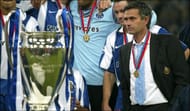
In 2004, Mourinho did what at that time was considered the impossible. Some would even argue about its plausibility today. Such is the brilliance of that accomplishment. In 2004, Jose Mourinho conquered Europe with an unfashionable Porto side to announce himself to the world.
The team was comprised of virtual unknowns, some who would go on to have decent careers while most were exposed for their limited capabilities. Mourinho accounted for all of the team’s flaws and put together a tactic that was indomitable that season.
Porto were arranged in a 4-3-1-2 system with three defensive midfielders. The midfield trio shielded the defence and also provided cover for the attacking fullbacks. The front three were solely responsible for the attacking phase.
The team was incredibly disciplined and snuffed out any breathing space for the opposition. The defense played an incredibly high line, catching unwitting strikers in their offside trap. The team was well oiled and played to their strengths while being mindful of their deficiencies.
While many will point to this being the start of the 'park the bus' strategy, it was anything but. This team could attack well and only resorted to a defensive mindset in the company of overwhelming favourites.
#5 Sir Alex Ferguson\'s Manchester United (circa 2008)
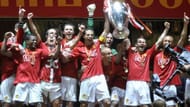
The 4-3-3 employed by Sir Alex Ferguson in the 2007/08 campaign has to be one of the most flexible football formations in English football history. It did away with the rigid roles and allowed for more freedom to the more fanciful players. It could also be altered to make for a more disciplined eleven by just interchanging a few roles or players.
The back four was protected by two defensive midfielders. Two of Paul Scholes, Michael Carrick, Owen Hargreaves and Darren Fletcher were generally used. An attacking midfielder was used to play in between the lines and the front three is what made this characteristic tactic unpredictable and, at times, unplayable.
The front three comprised of Cristiano Ronaldo, Wayne Rooney and Carlos Tevez. All were gifted individuals and their understanding of the game allowed them to interchange places during the games. Ball hoarding teams often found Tevez and Rooney dropping deep while overtly attacking teams would find Park Ji Sung manning one of the wide positions to provide extra cover.
